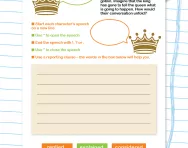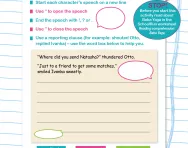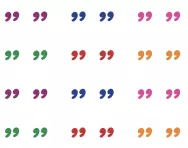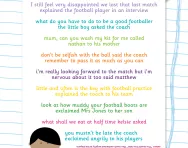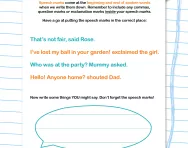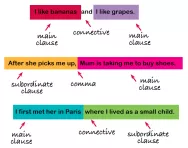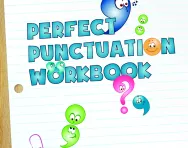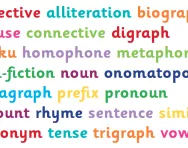What are direct and indirect speech?
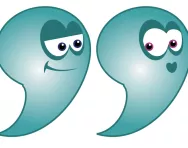
Contents:
Direct speech explanation
Indirect speech explanation
When do children learn about direct speech?
When do children learn about indirect speech?
Examples of questions your child may be asked
FAQS
What is direct speech?
Direct speech is a sentence in which the exact words spoken are reproduced in speech marks (also known as quotation marks or inverted commas). For example:
What is indirect speech?
Indirect speech is when the general points of what someone has said are reported, without actually writing the speech out in full. It is sometimes called reported speech. For example:
When do children learn about direct speech?
Teachers will start to teach children how to set out direct speech in Year 3.
The general rules of direct speech are:
- Each new character's speech starts on a new line.
- Speech is opened with speech marks.
- Each line of speech starts with a capital.
- The line of speech ends with a comma, exclamation mark or question mark.
- A reporting clause is used at the end (said Jane, shouted Paul, replied Mum).
- A full stop goes after the reporting clause.
- If the direct speech in the sentence is broken up by information about who is speaking, add in a comma or question mark or exclamation mark to end the first piece of speech and a full stop or another comma before the second piece (before the speech marks), for example: "It's lovely," she sighed, "but I can't afford it right now." / "I agree!" said Kate. "Let's go!"
When do children learn about indirect speech?
In Year 5, children may be taught a literacy unit that guides them in writing a newspaper article including the use of indirect (or reported) speech. In Year 6, children may be encouraged to use indirect speech when writing a biography or practising further journalistic writing.
When changing direct speech into indirect speech, changes have to be made to a sentence. For example:
- Verb tenses usually shift back a tense (into the past)
- Word order often needs to change
- Pronouns often need to change
- Words indicating place and time need to change
By Year 6 children should be setting out speech and punctuating it correctly in their stories. In fiction indirect speech can sometimes be helpful if a character in a story wants to recount a conversation they have had in the past.
For direct and indirect speech worksheets and activities to help your child put the theory into practice look through our punctuation worksheets.
Examples of questions your child may be asked at school
Here are some examples of questions about direct and indirect speech that primary school children may be asked:
Direct speech:
- "What did Sarah say when she found the lost puppy?"
- "Can you write down exactly what Tom shouted when he scored the winning goal?"
- "How would you quote what Mom said when she saw the messy room?"
Indirect speech:
FAQs about direct and indirect speech
Here are five frequently asked questions (FAQs) about direct and indirect speech:
Q: What is direct speech?
A: Direct speech is when you quote someone's exact words within quotation marks. For example, "I love chocolate," said Sarah.
Q: What is indirect speech?
A: Indirect speech is when you report what someone said without quoting their exact words. It often involves changing the tense, pronouns, and other details. For example, Sarah said that she loved chocolate.
Q: How do you punctuate direct speech?
A: Direct speech is typically enclosed in quotation marks and followed by a comma or a punctuation mark within the quotation marks. For example, "I'm going to the park," said Tom.
Q: When do we use direct speech?
A: Direct speech is used when you want to convey someone's exact words, often to add authenticity or to quote someone in writing or dialogue.
Q: How do you change direct speech to indirect speech?
A: To change direct speech to indirect speech, you often need to adjust the tense, pronouns, and other details to make it grammatically correct within the context of the reporting sentence. For example, "I'll see you tomorrow," said John (direct speech) can be changed to John said that he would see me the next day (indirect speech).

Give your child a headstart
- FREE articles & expert information
- FREE resources & activities
- FREE homework help


